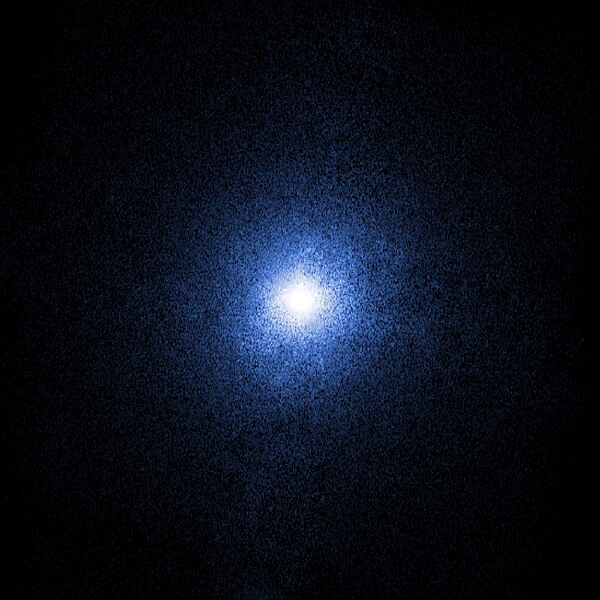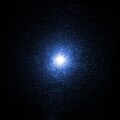Archivo:Chandra image of Cygnus X-1.jpg

Tamaño de esta previsualización: 600 × 600 píxeles. Otras resoluciones: 240 × 240 píxeles · 480 × 480 píxeles · 768 × 768 píxeles · 1024 × 1024 píxeles · 2400 × 2400 píxeles.
Ver la imagen en su resolución original (2400 × 2400 píxeles; tamaño de archivo: 3,72 MB; tipo MIME: image/jpeg)
Historial del archivo
Haz clic sobre una fecha y hora para ver el archivo tal como apareció en ese momento.
| Fecha y hora | Miniatura | Dimensiones | Usuario | Comentario | |
|---|---|---|---|---|---|
| actual | 19:06 13 ago 2015 |  | 2400 × 2400 (3,72 MB) | Pine | Larger version. Source http://chandra.harvard.edu/photo/2011/cygx1/more.html, credit NASA/CXC |
| 16:02 11 sep 2009 |  | 665 × 665 (61 kB) | Marshallsumter | {{Information |Description={{en|1=Chandra image of Cygnus X-1.}} |Source=NASA/CXC |Author=NASA's Chandra X-ray Observatory |Date=2009-08-27 |Permission=''Images produced by NASA are usually free of copyright [...]'' |other_versions= }} Since its discovery |
Usos del archivo
Las siguientes páginas usan este archivo:
Uso global del archivo
Las wikis siguientes utilizan este archivo:
- Uso en as.wikipedia.org
- Uso en ca.wikipedia.org
- Uso en cs.wikipedia.org
- Uso en en.wikipedia.org
- Black hole
- Timeline of gravitational physics and relativity
- Cygnus X-1
- Chandra X-ray Observatory
- User:Fmrauch
- Astrophysical X-ray source
- User:The High Fin Sperm Whale/Fact of the day/Archive
- Wikipedia:Featured picture candidates/August-2015
- Wikipedia:Featured picture candidates/Cygnus X-1
- User:Matt Fitzpatrick/portal images
- User:VastV0idInSpace0/Eyestrain-page
- Uso en en.wikiquote.org
- Uso en en.wikiversity.org
- Uso en fr.wikipedia.org
- Uso en gl.wikipedia.org
- Uso en he.wikipedia.org
- Uso en hu.wikipedia.org
- Uso en id.wikipedia.org
- Uso en it.wikipedia.org
- Uso en ja.wikipedia.org
- Uso en jv.wikipedia.org
- Uso en ko.wikipedia.org
- Uso en lt.wikipedia.org
- Uso en mk.wikipedia.org
- Uso en ml.wikipedia.org
- Uso en mr.wikipedia.org
- Uso en nl.wikipedia.org
- Uso en oc.wikipedia.org
- Uso en pl.wikinews.org
- Uso en pnb.wikipedia.org
Ver más uso global de este archivo.

